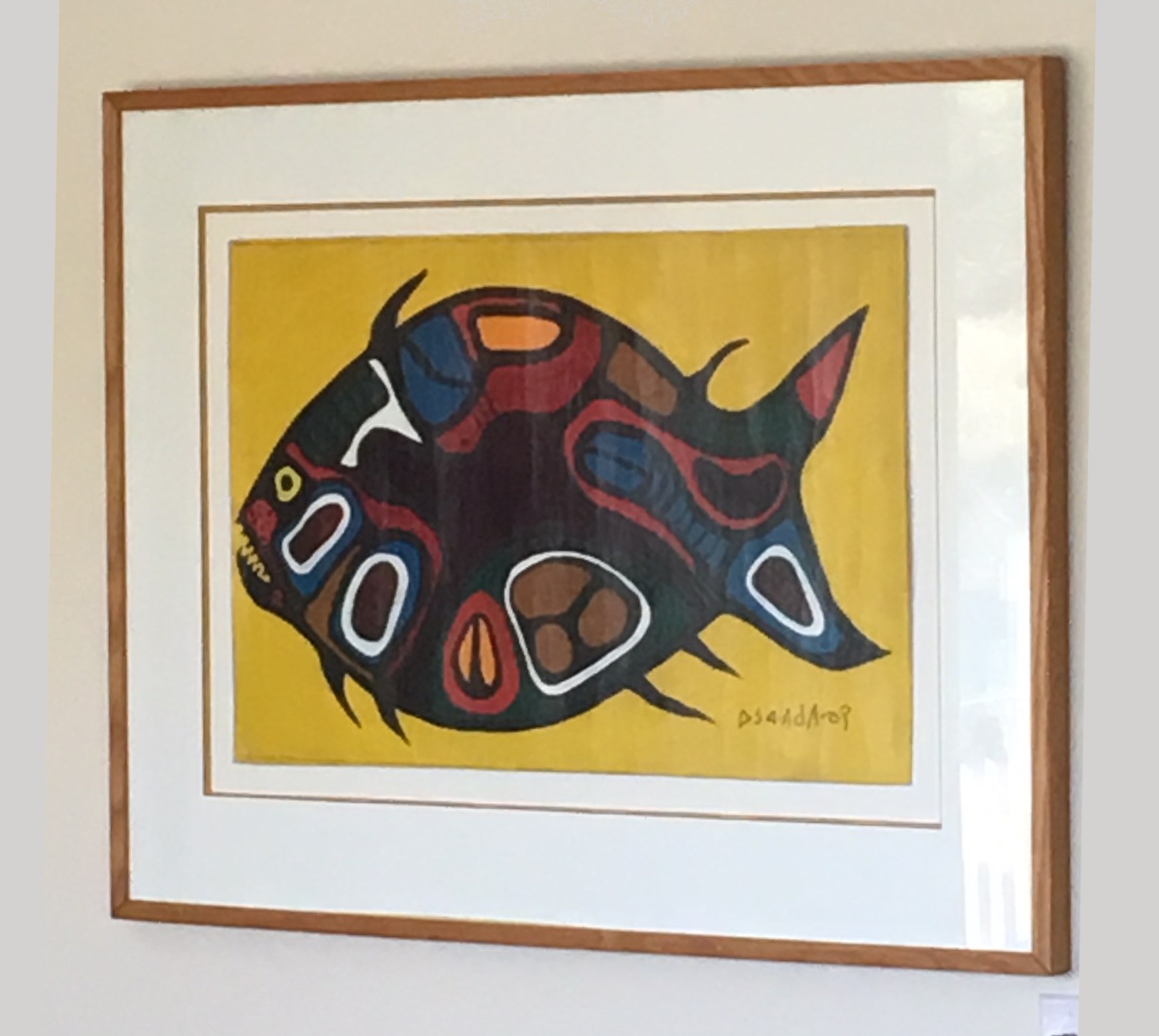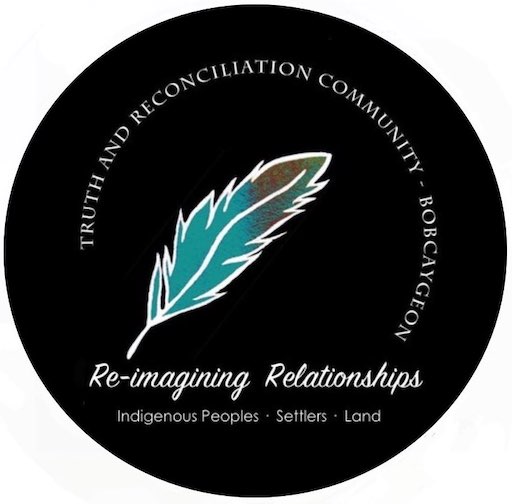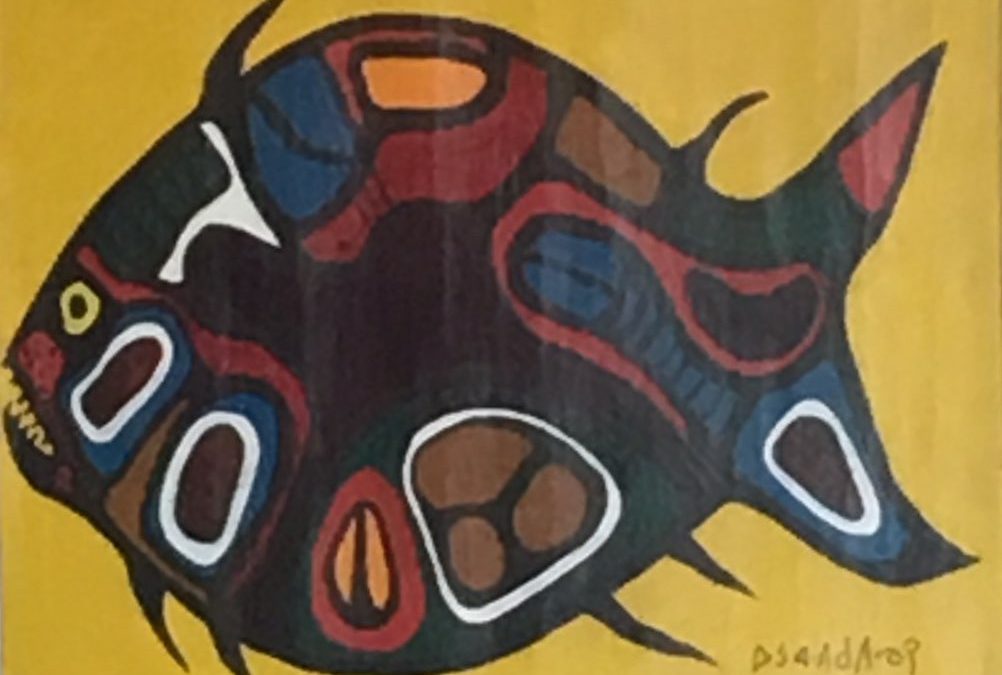This painting by Norval Morrisseau is from the private collection of Linda Lundstrom. Purchased by Olive Lundström, in 1966 or 1967. Norval would visit her Cochenour Fabric Centre with his paintings rolled up under his arm. As a child, Linda remembers him vividly. Cochenour was a gold mining town of about 250 people and Norval was a striking figure, with an unusual gait, a roll of brown builder’s paper under his arm, always heading somewhere important.

AGO Show: BEFORE AND AFTER THE HORIZON: ANISHINAABE ARTISTS OF THE GREAT LAKES
For more than 12,000 years, the Great Lakes region has produced a distinct culture of Anishinaabe artists and storytellers. The Art Gallery of Ontario (AGO) celebrates those artists and stories this summer with Before and after the Horizon: Anishinaabe Artists of the Great Lakes, featuring artworks by leading modern and contemporary artists — including Norval Morrisseau, Bonnie Devine, Robert Houle, Keesic Douglas, Michael Belmore, Daphne Odjig and others — who sought to visually express the spiritual and social dimensions of human relations with the earth.
The traditional home of the Anishinaabe peoples — comprised of Algonquin, Mississauga, Nippissing, Ojibwe (Chippewa), Odawa (Ottawa), Potawatomi and Saulteaux nations — the region includes Ontario, Manitoba and Quebec in addition to eight U.S. states and has inspired generations of stories and experiences that are spiritual, political and challenge certain accepted accounts of history. These same sources of inspiration are visible in traditional Anishinaabe arts included in the exhibition, including clan pictographs on treaty documents, bags embroidered with porcupine quill, painted drums and carved pipes, spoons and bowls…
“This is a powerful exhibition that is very much about this place and its timeless connection to a distinct world view, one that continues to resonate with Anishinaabe,” said Hunter. “The AGO is situated in the very heart of traditional Anishinaabe territory, and we are honoured to position this exhibition as a catalyst for reimaging our sense of place and community, and to feature the ground-breaking work of a significant group of artists who have lived and work in this area.”
…“This exhibition is a welcome opportunity to reconsider, through various political and aesthetic interventions by Anishinaabe artists, how Canadian art history has been traditionally presented at the AGO,” said Devine. “The Anishinaabe have continuously occupied the territory around the Great Lakes for at least 12,000 years, so a survey exhibition of contemporary Anishinaabe art is overdue.”

